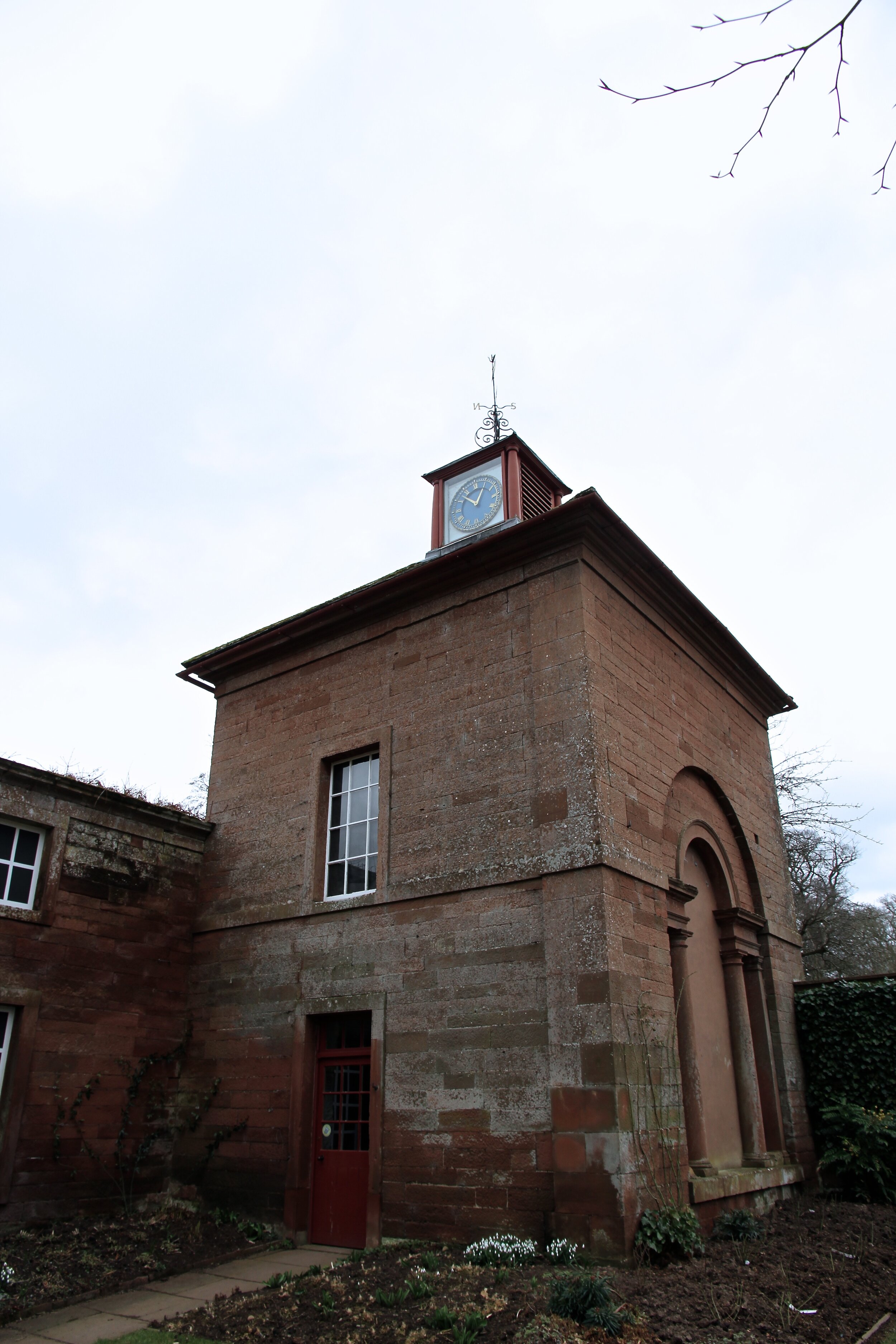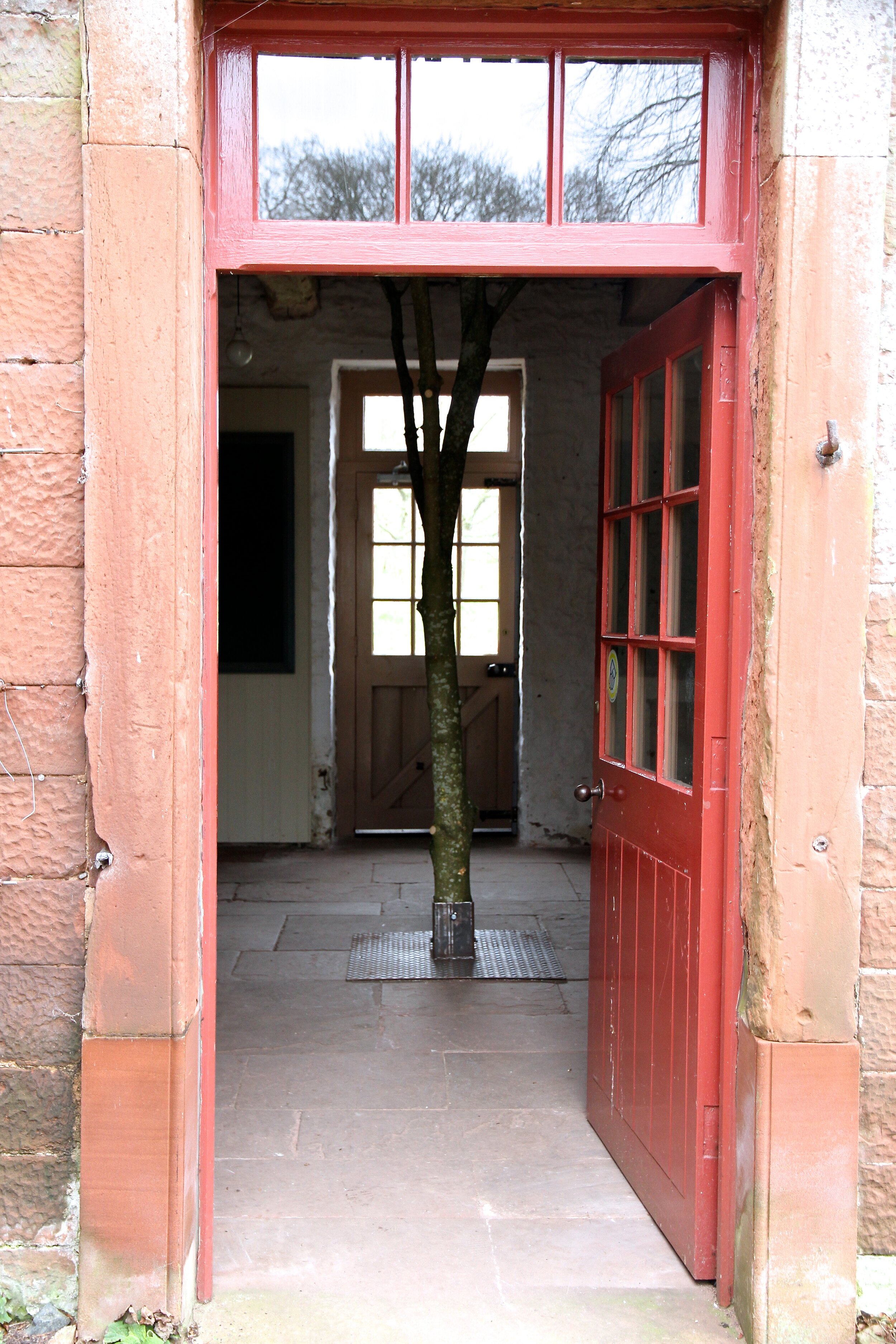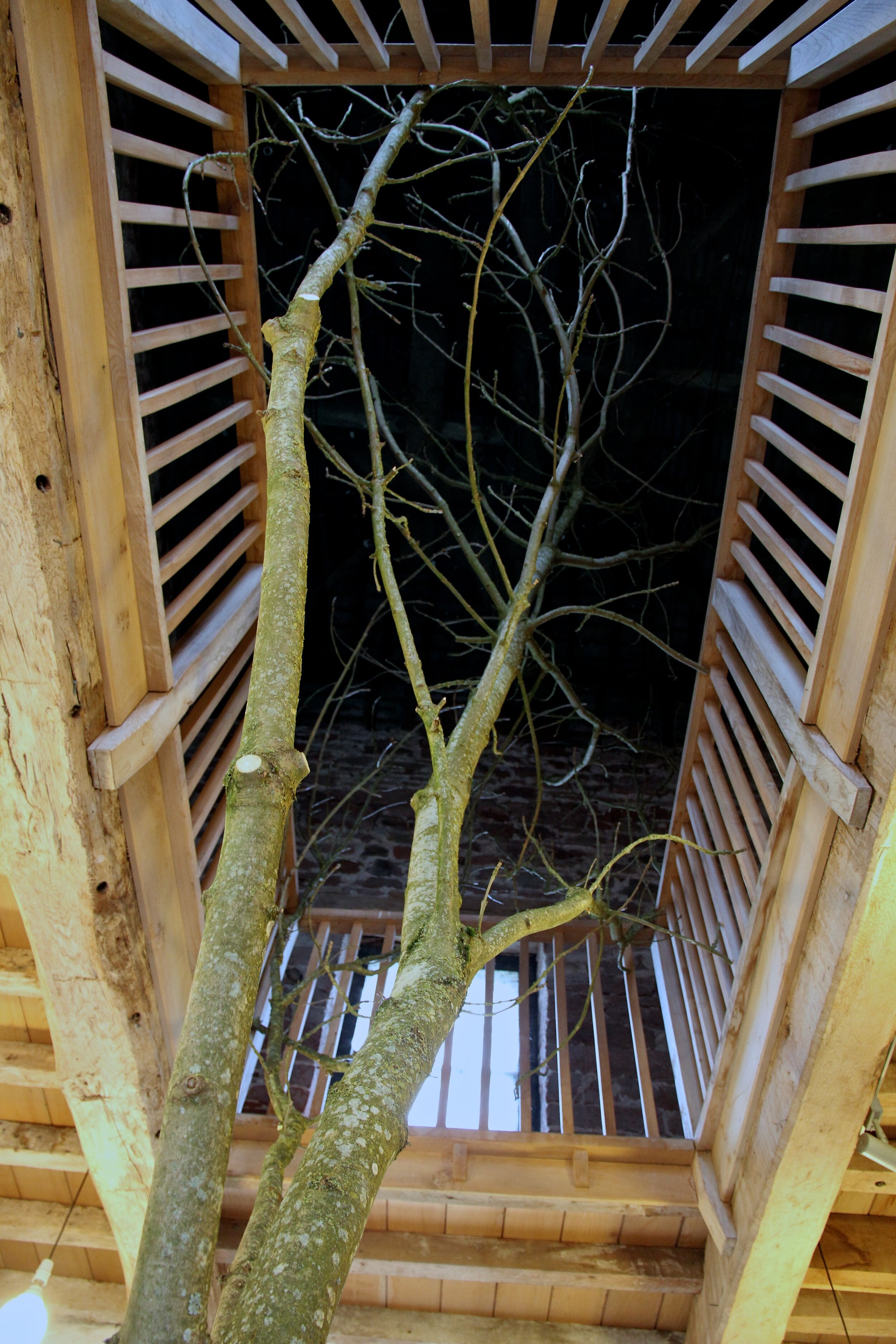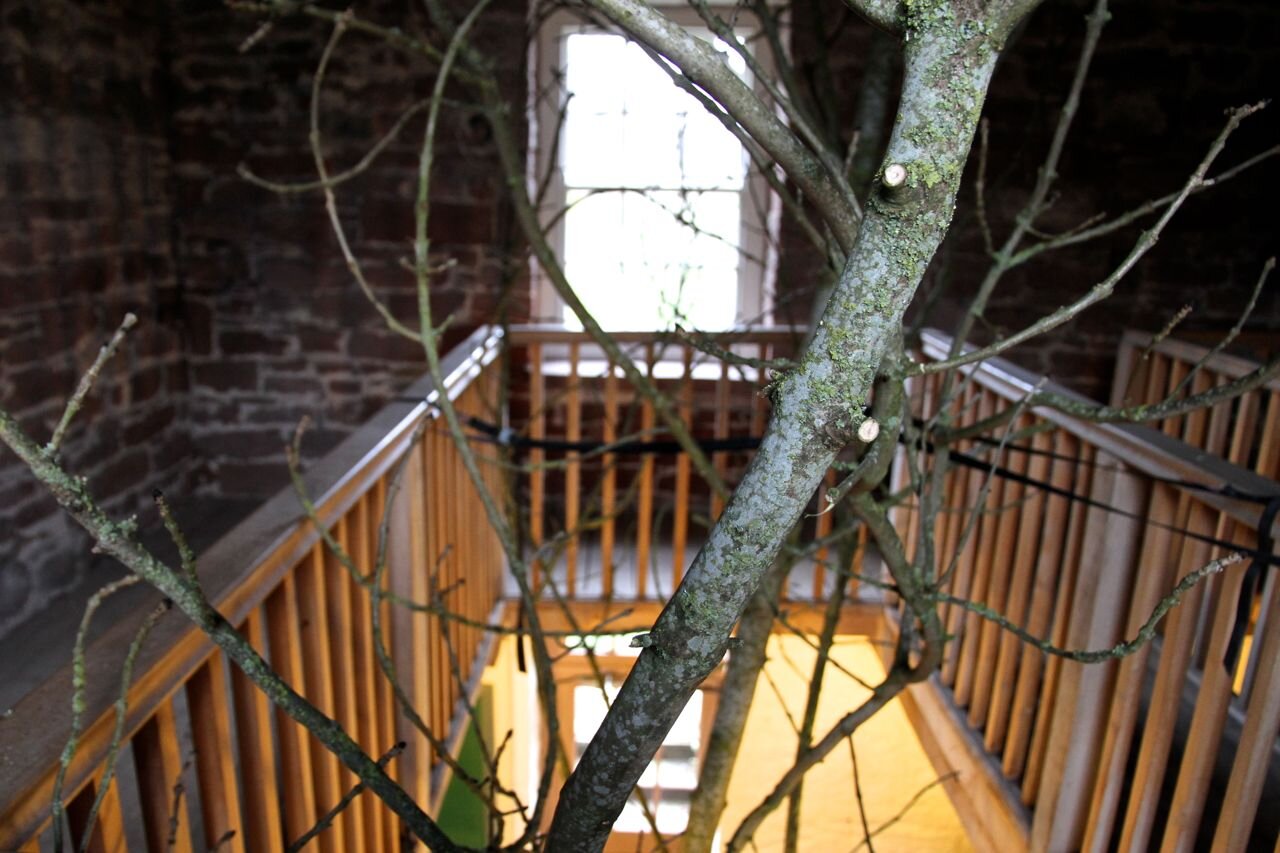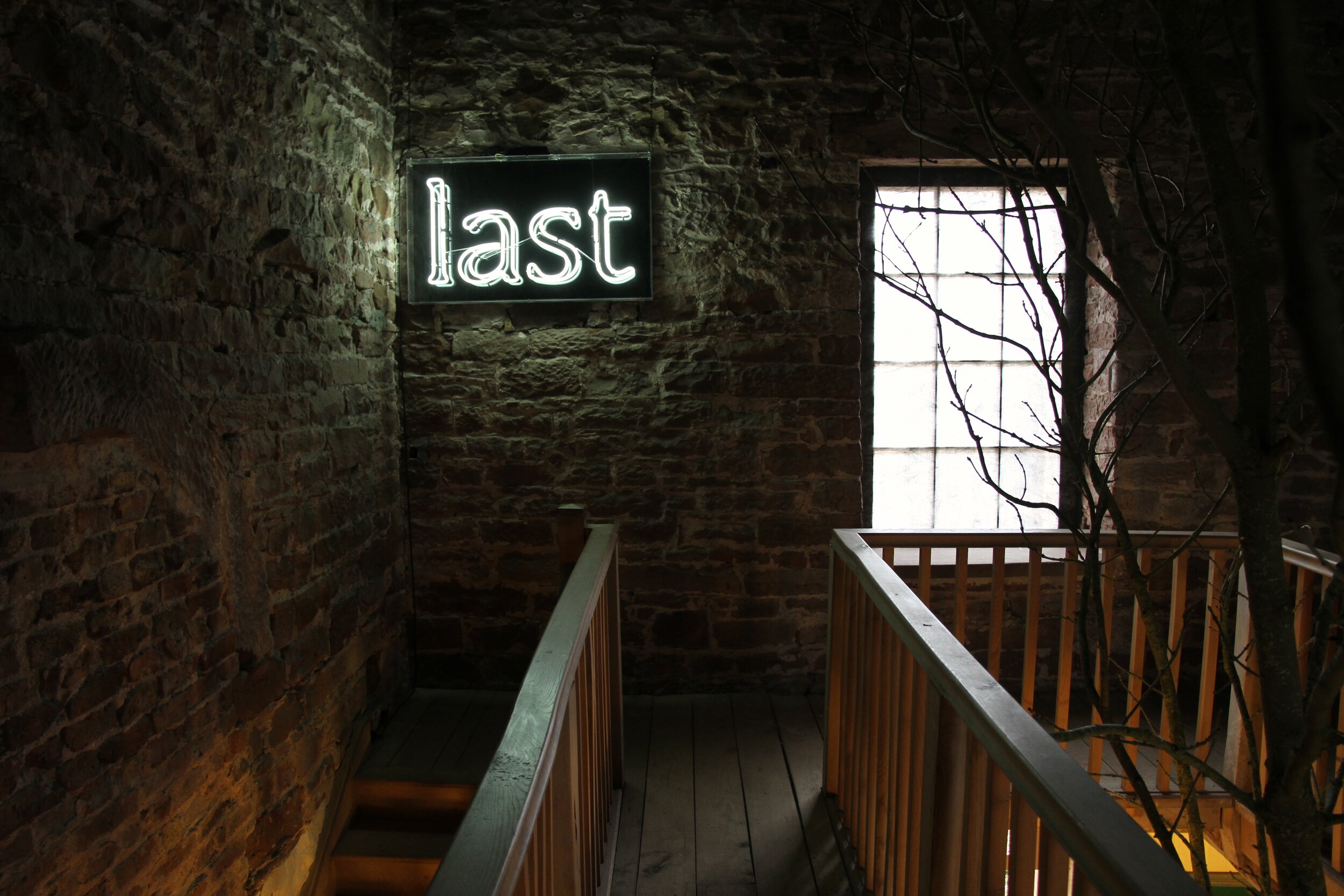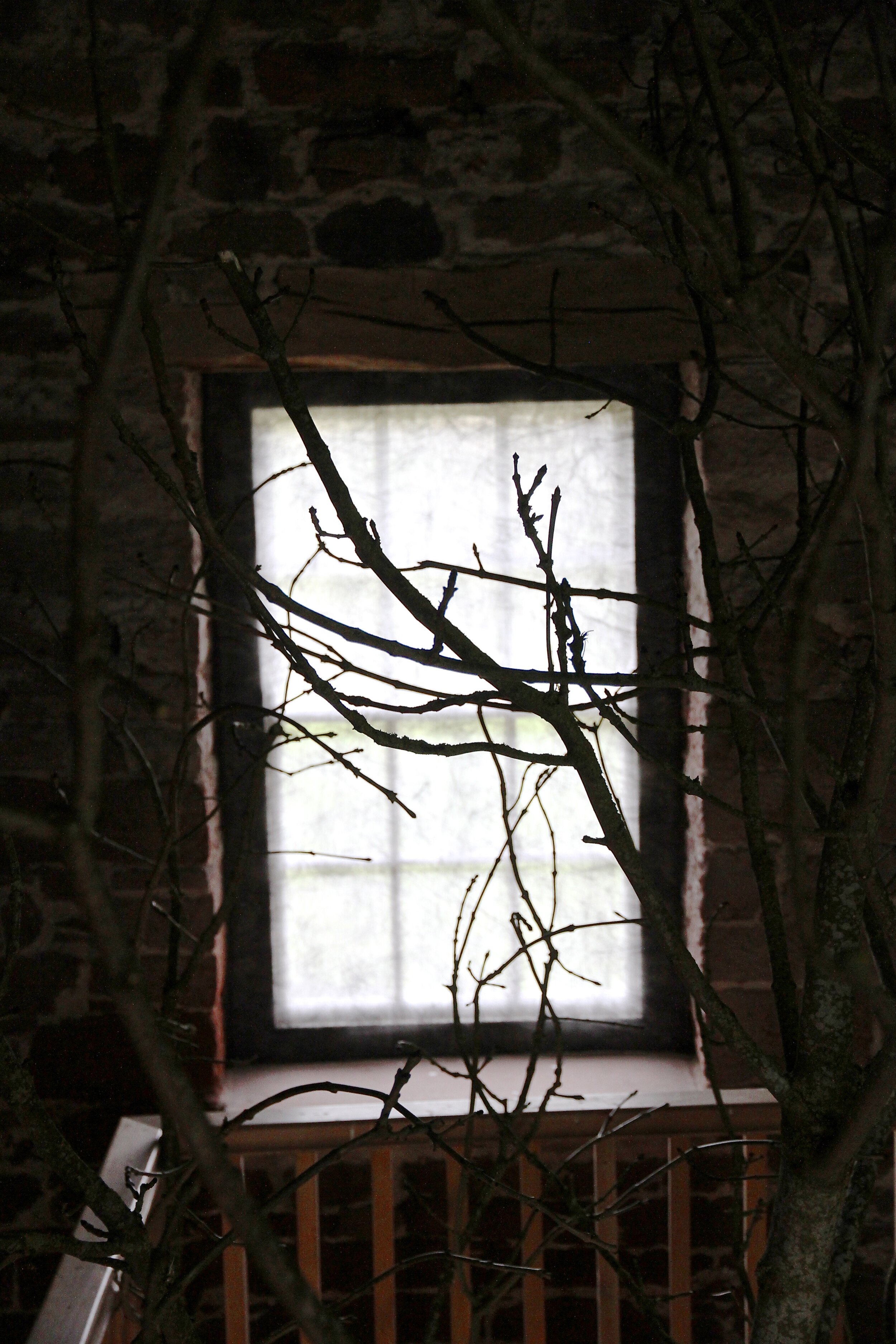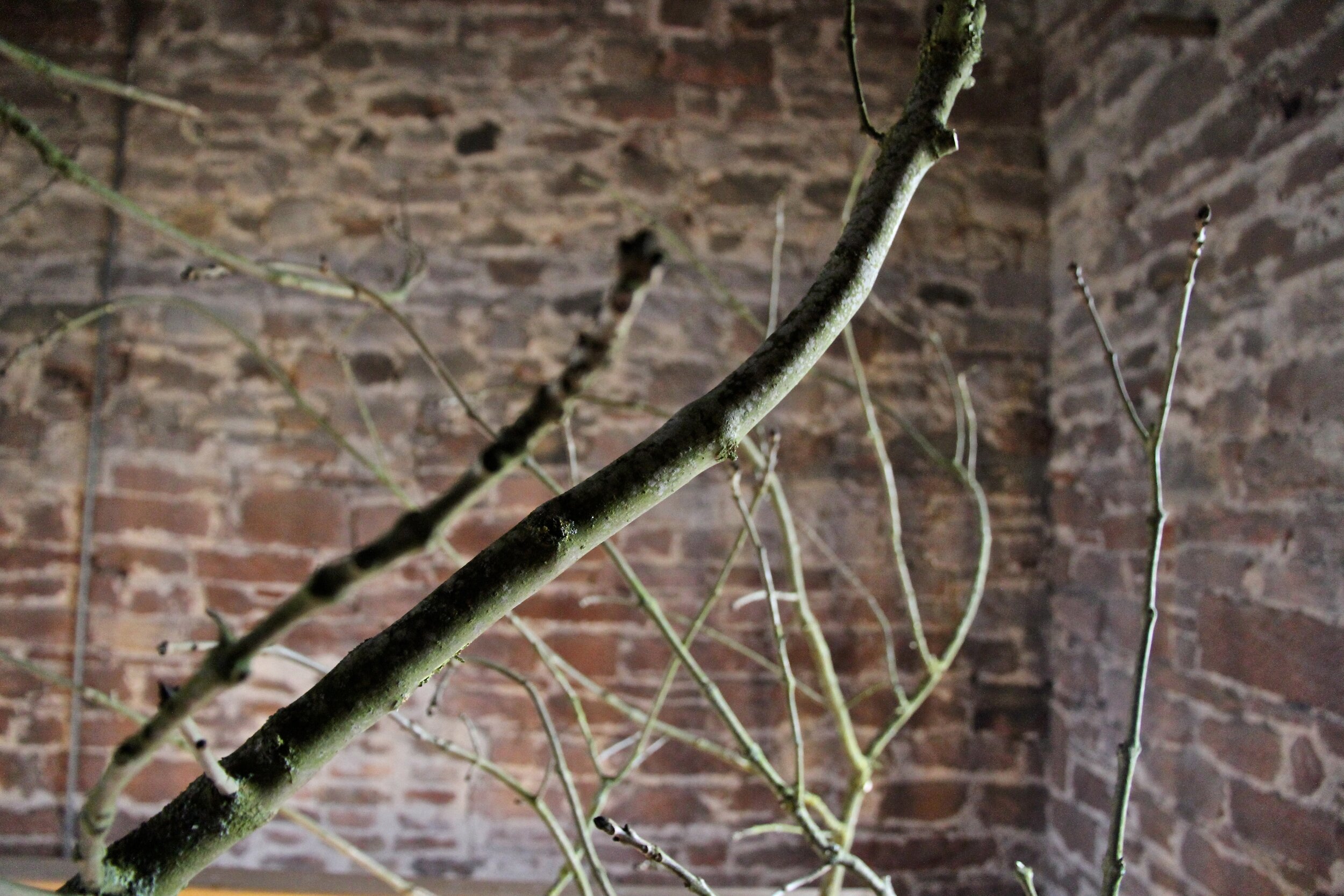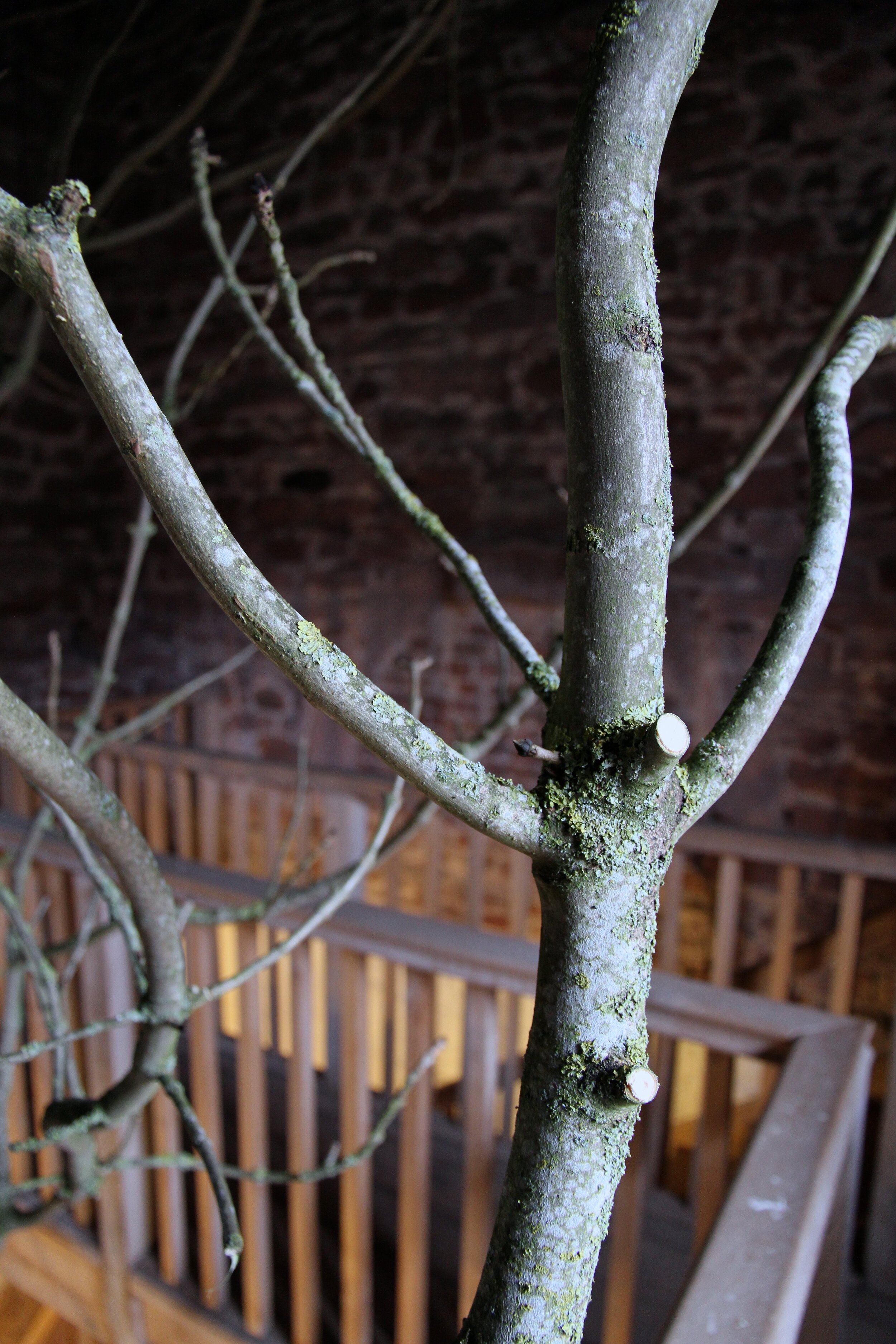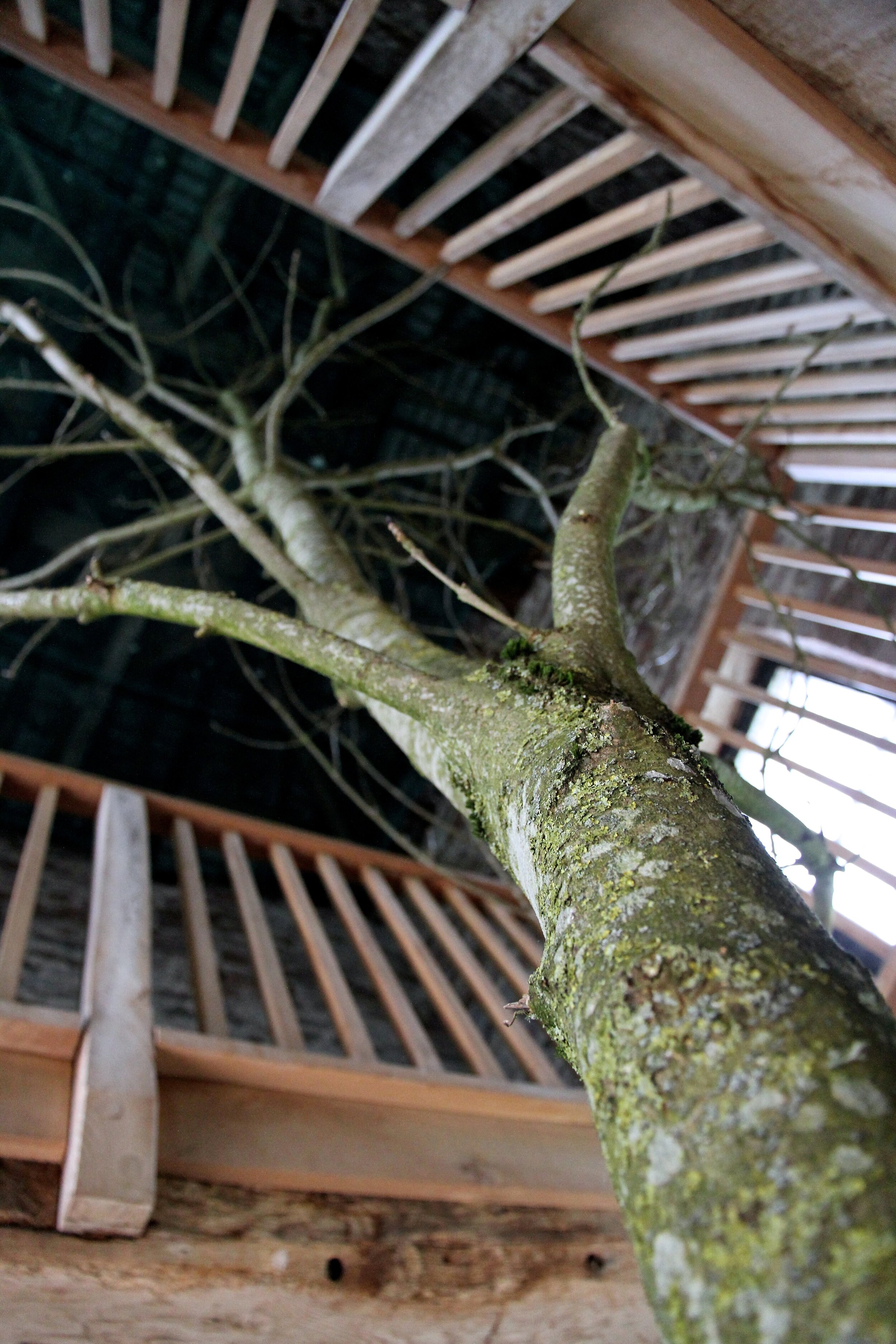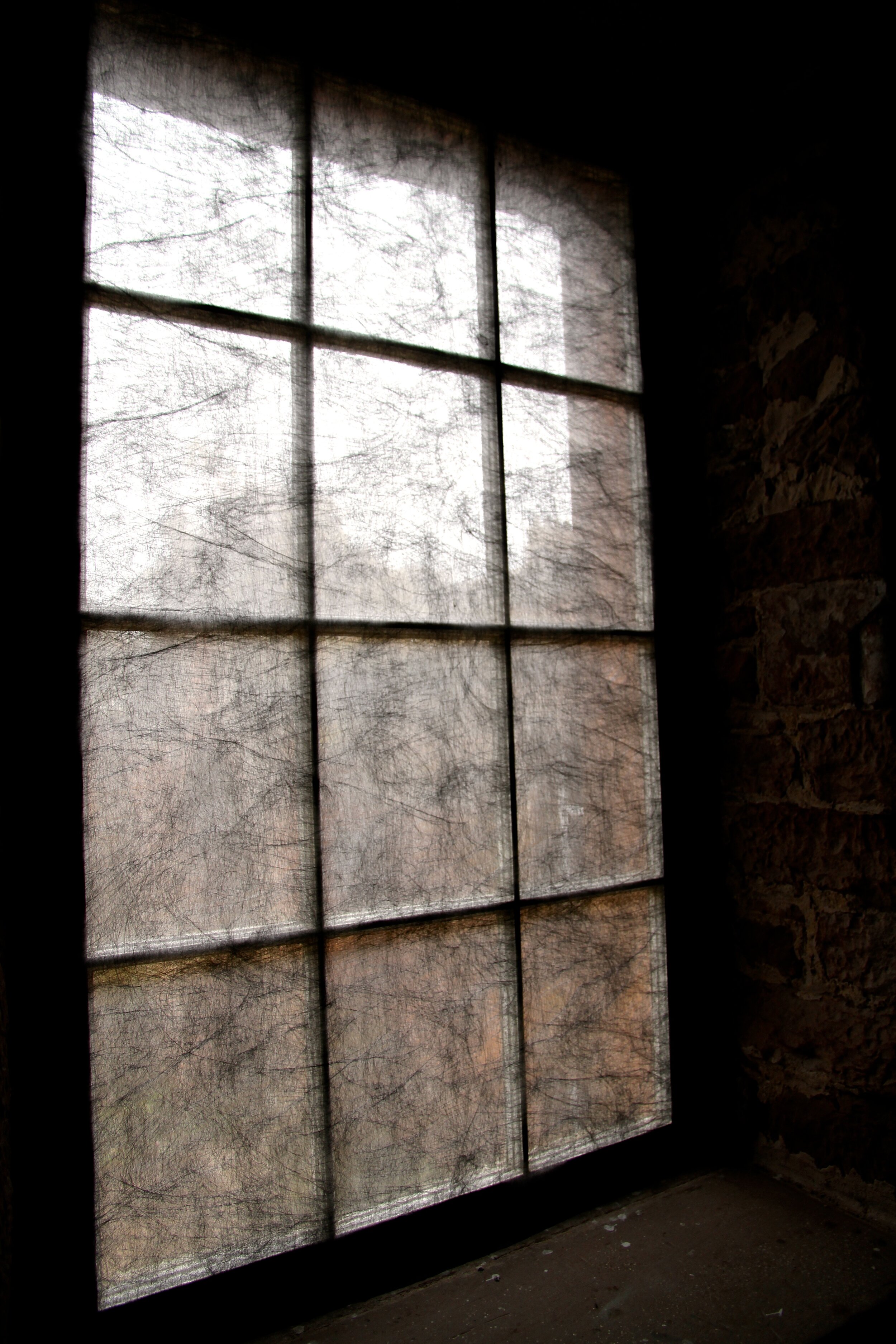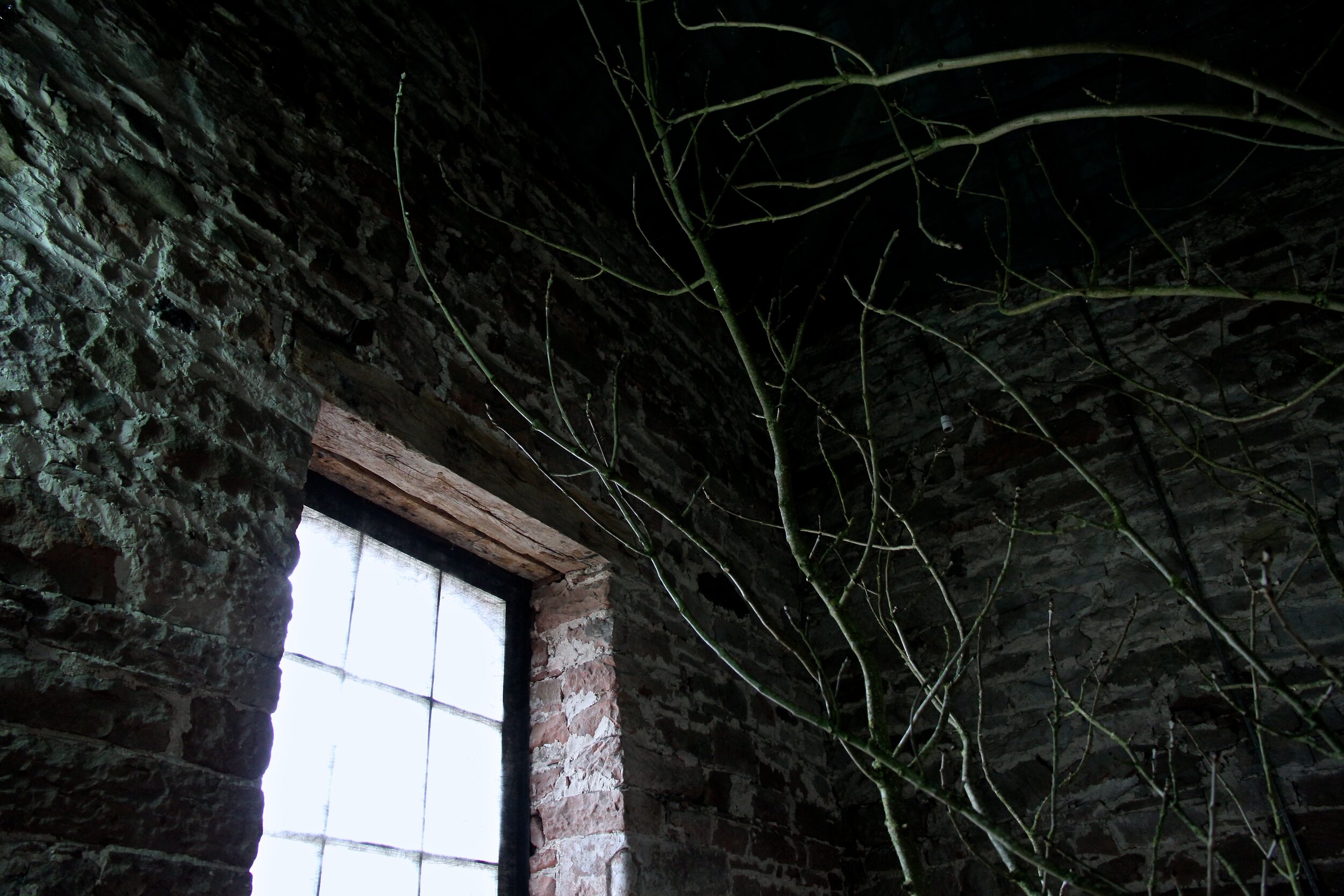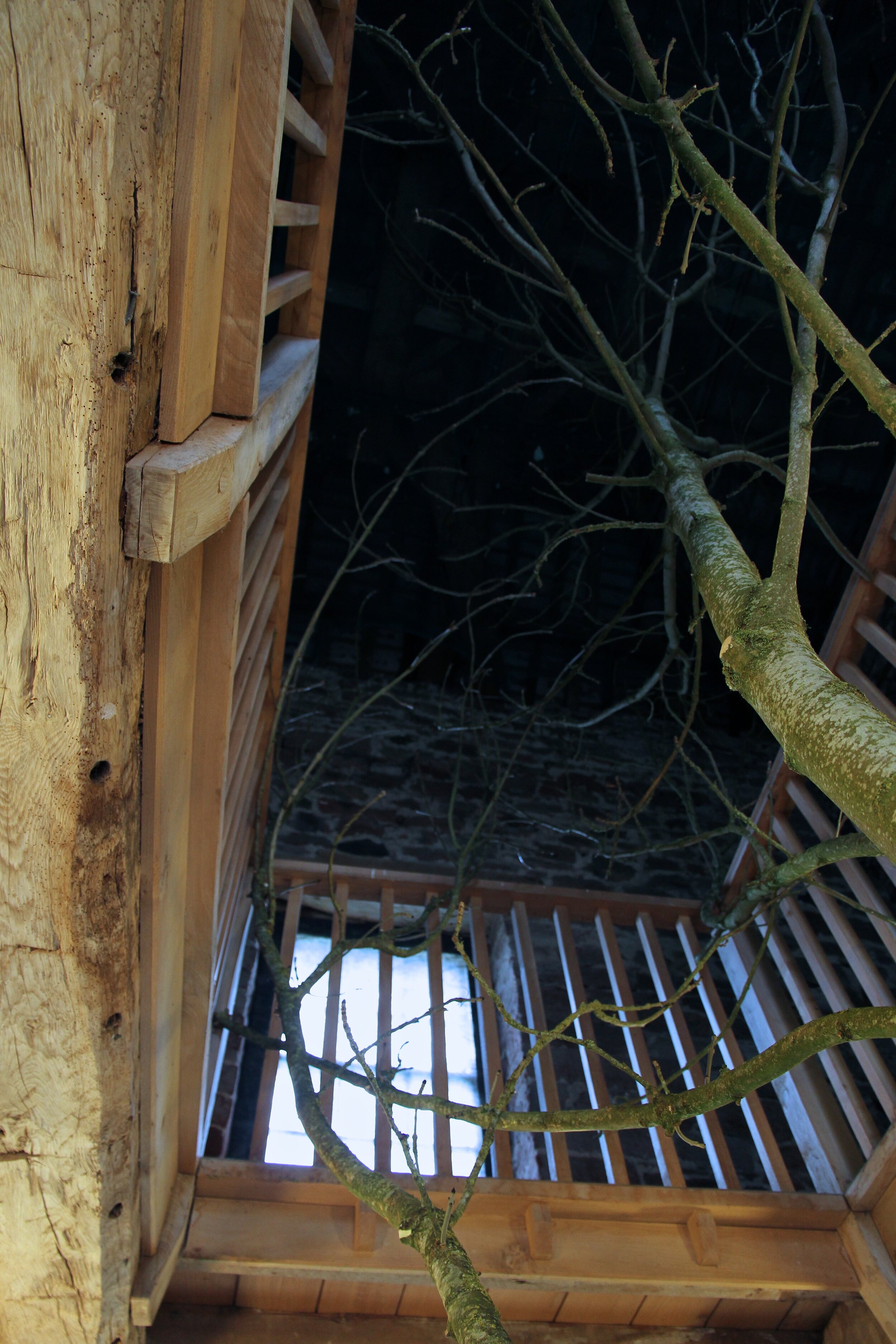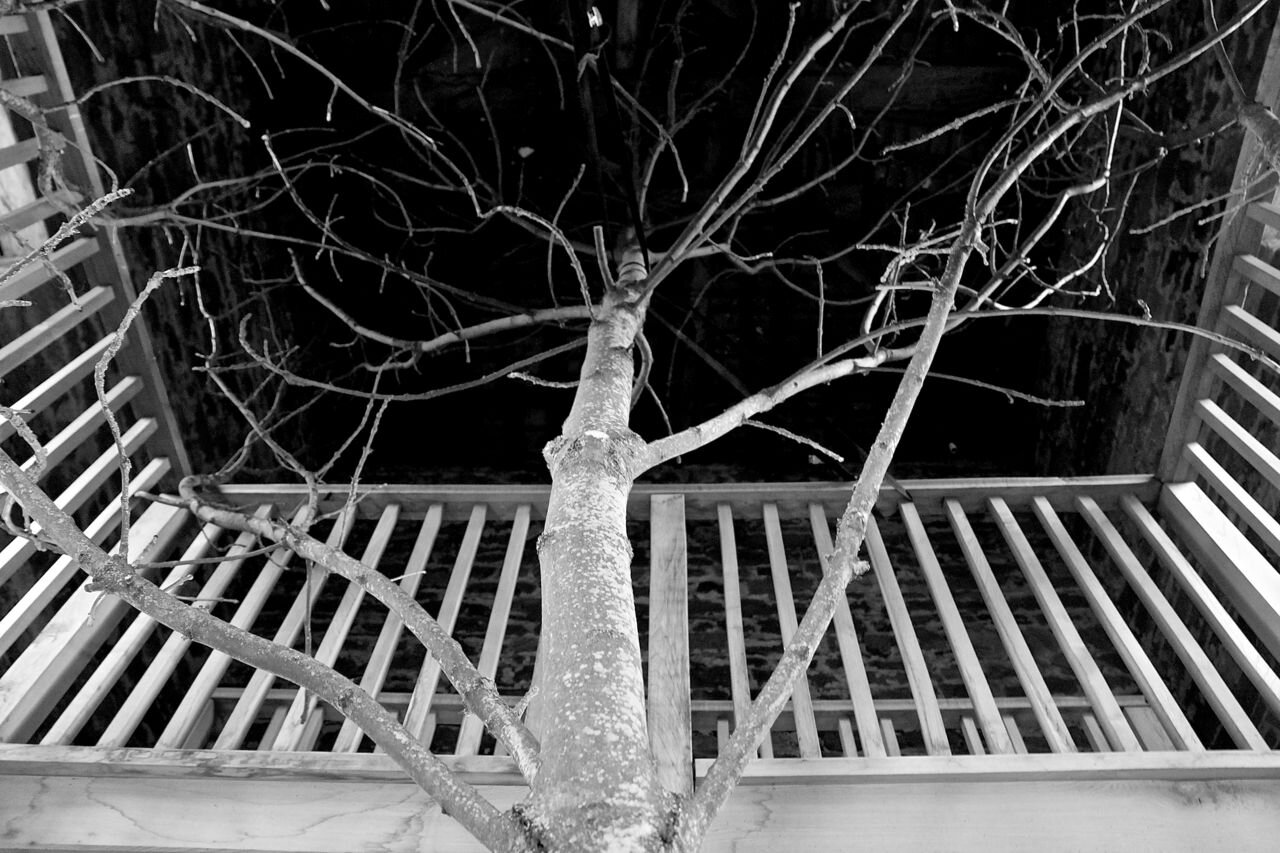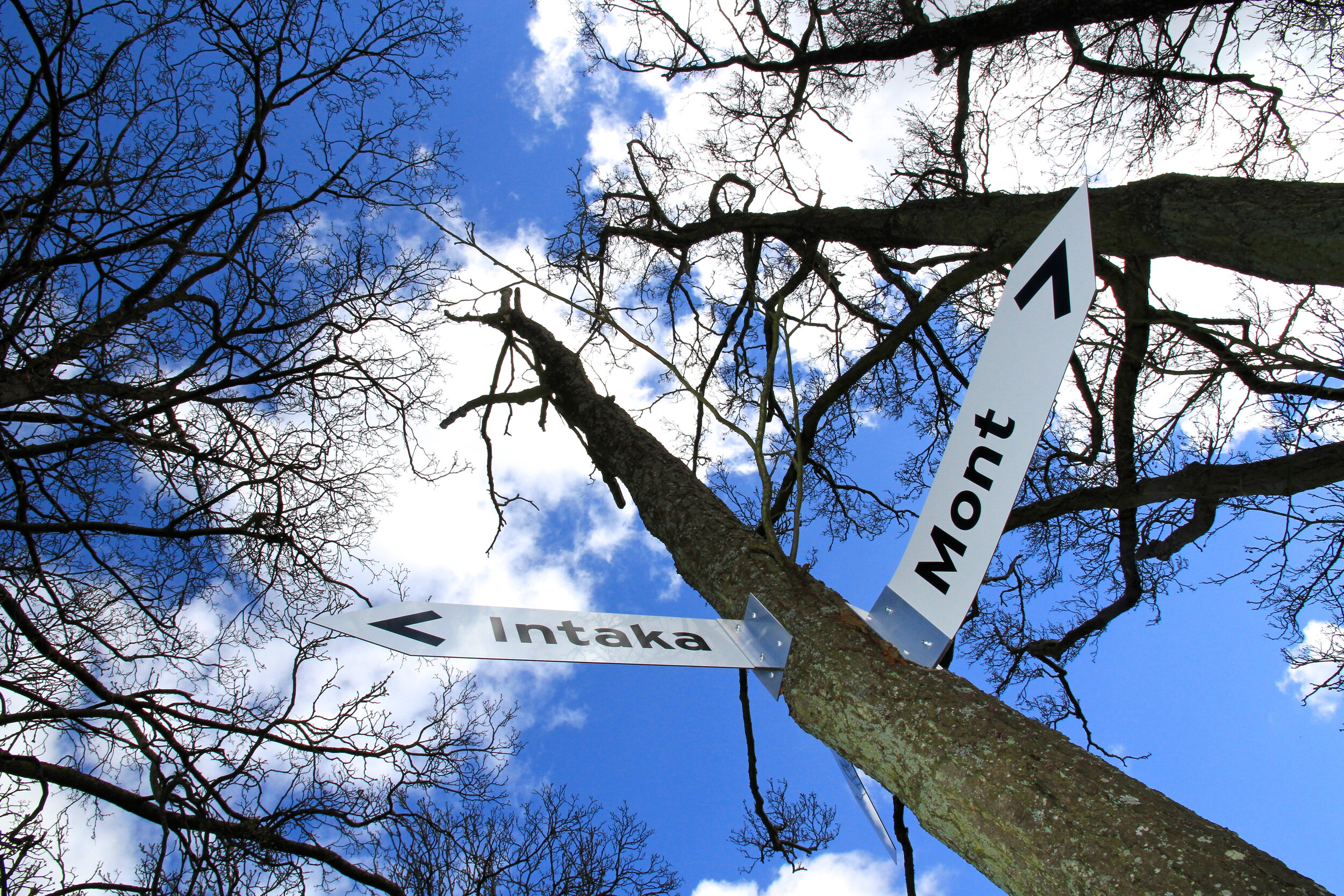
‘The Canopy Suite’
"10 months ago I began a residency with the brief to create ‘artwork in trees’ for Eden Arts, Cumbria. What began as a series of ideas & objects ceremonially hung from branches has stretched to concepts that reflect upon socio-economic cultural and historical narratives. I’ve been challenged and delighted, deeply saddened by Foot and Mouth and utterly inspired by the history of the region and its innate beauty"
Woolston
Installation 1 of 2
‘Watchtree’ (2013) / 12 aluminium composite signs
Ullswater, nr Pooley Bridge, Cumbria.
Sited within the rural landscape of Cumbria, a grove of trees (some living and some dead) support a series of signs that point outwards towards the surrounding natural features. The words seem familiar yet perhaps forgotten, written in Old Norse, Brythonic, Anglo-Norman & Middle English their meanings can be found in the surrounding mountains, rivers, rocks and language.
blaen (summit)
carreg (rock)
bekkr (stream)
dalr (valley / dale)
fors (waterfall)
fjallr (mountain / usually large and flat)
gil (ravine)
holmr (hill)
intaka (intake)
pic (peak)
tjorn (small lake)
mont (hill)
Watchtree (2013) has been commissioned by Eden Arts, with kind permission from Waterside House Campsite & Farm, The Dalemain Estate and The Lake District National Park Authority.
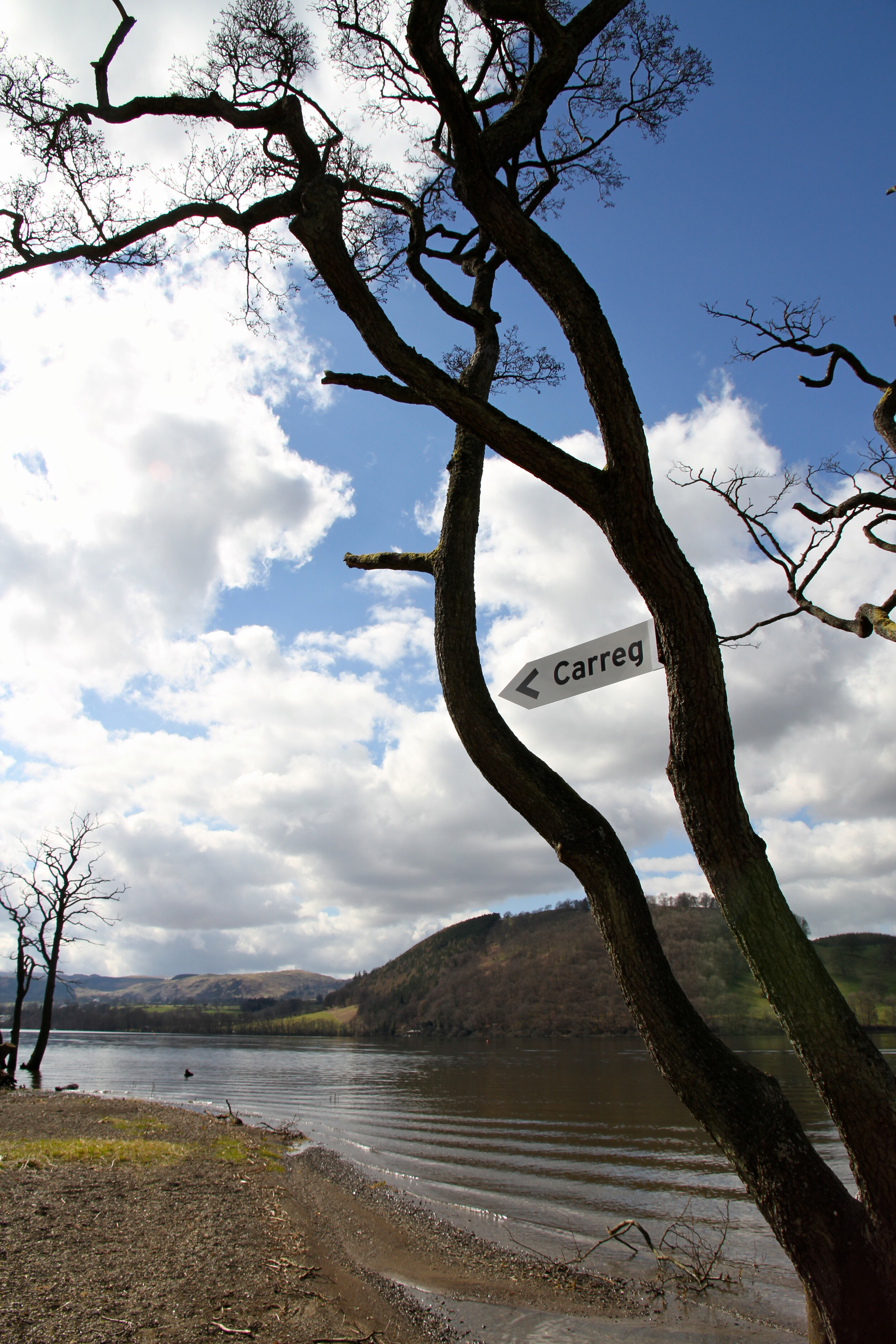
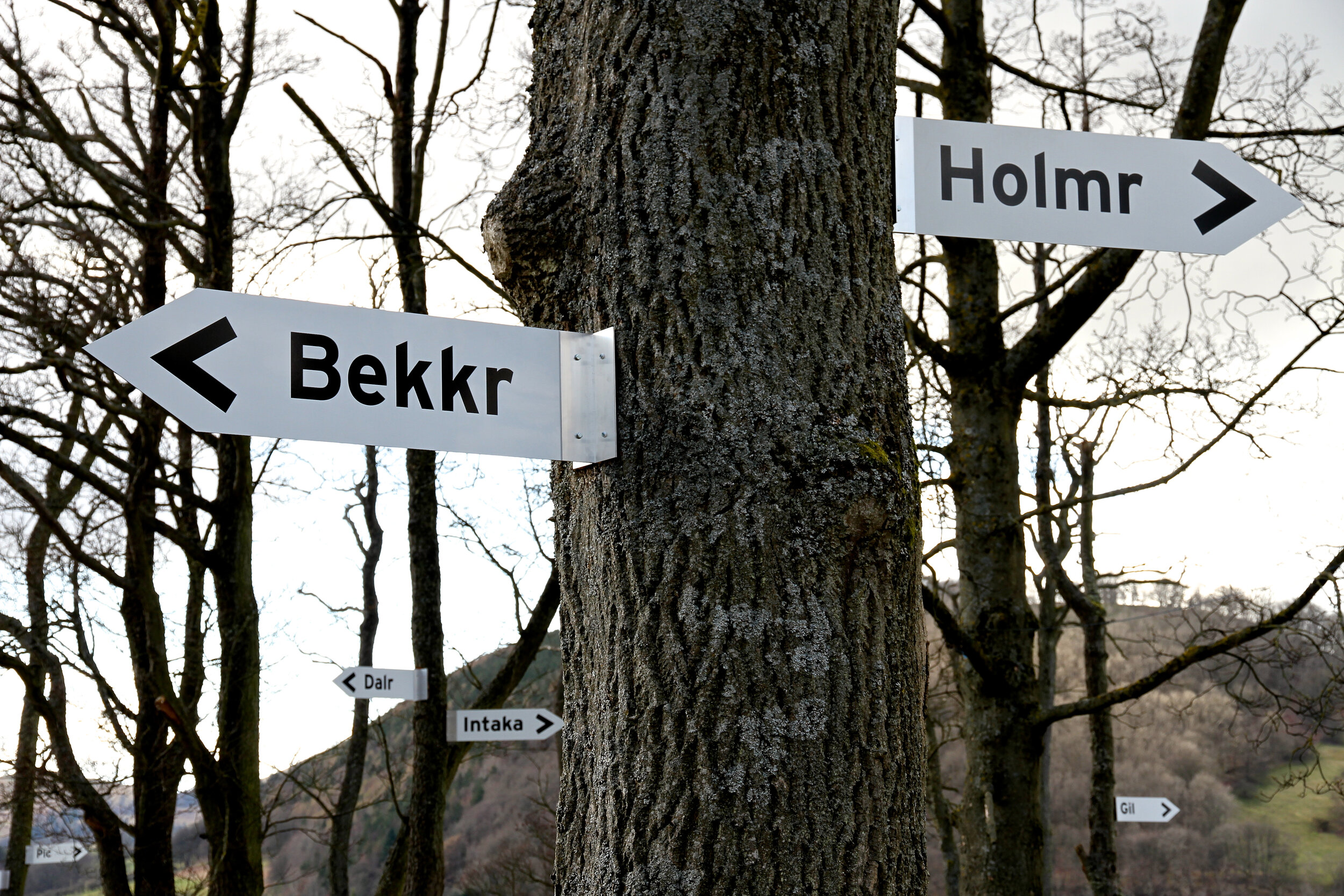

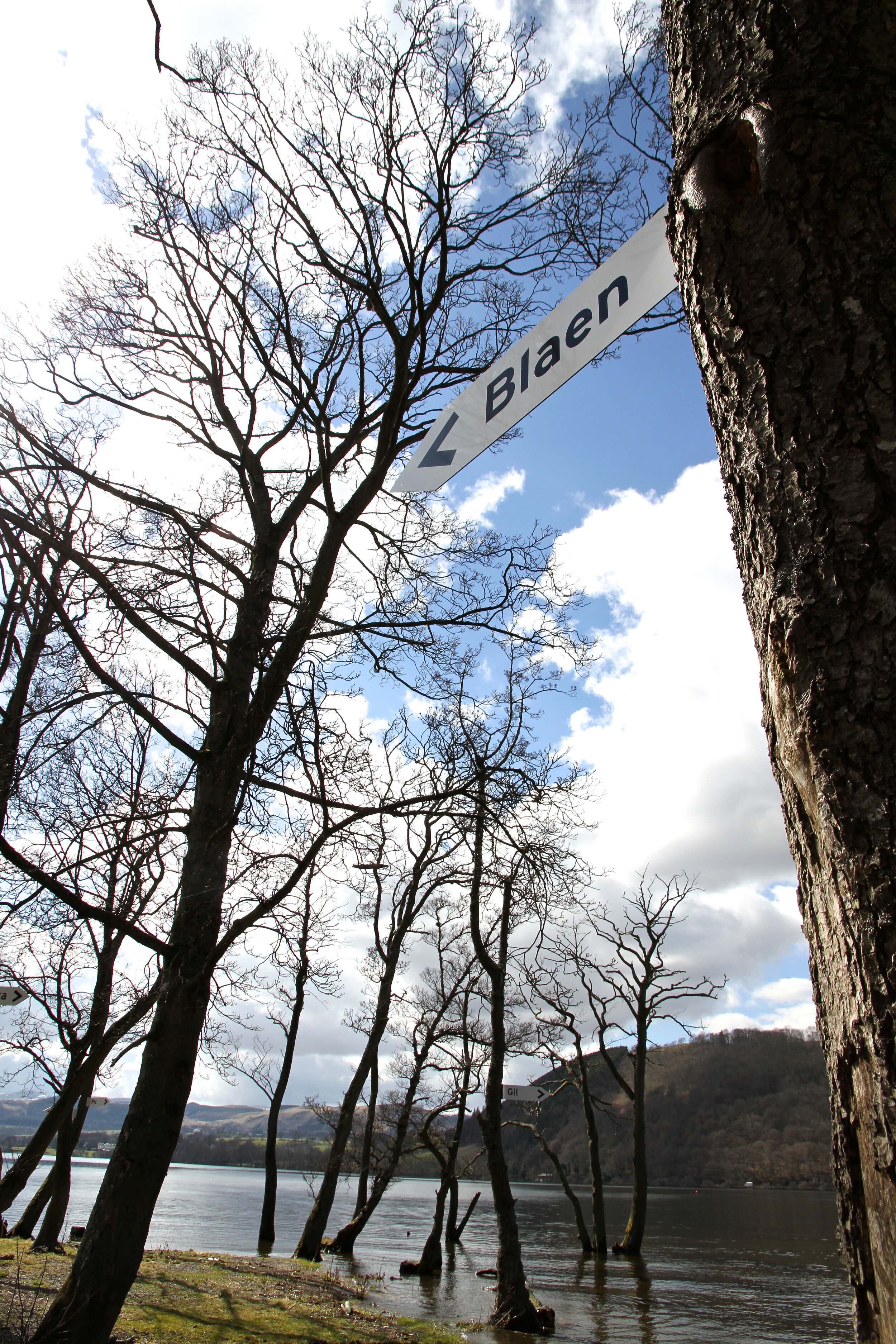

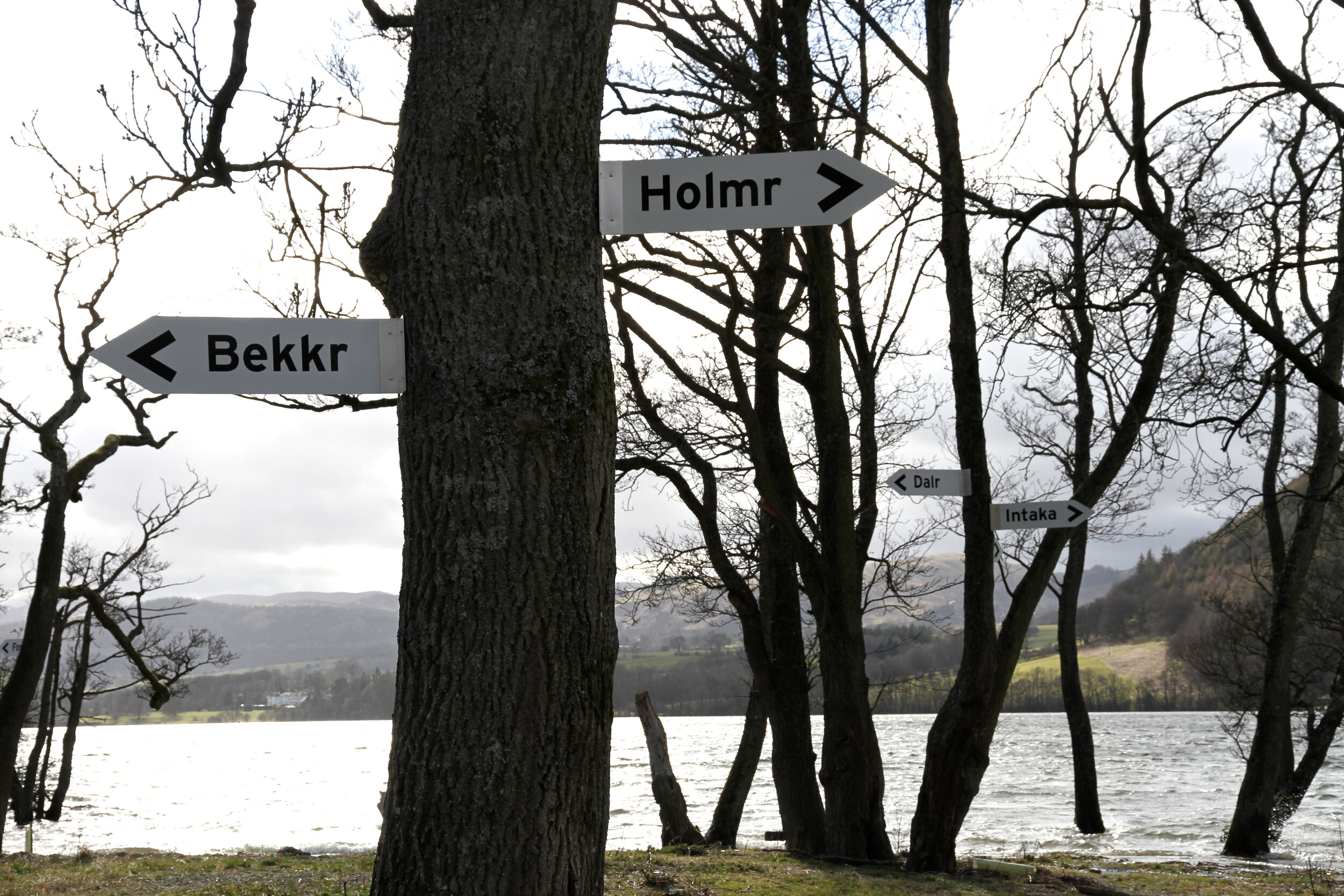

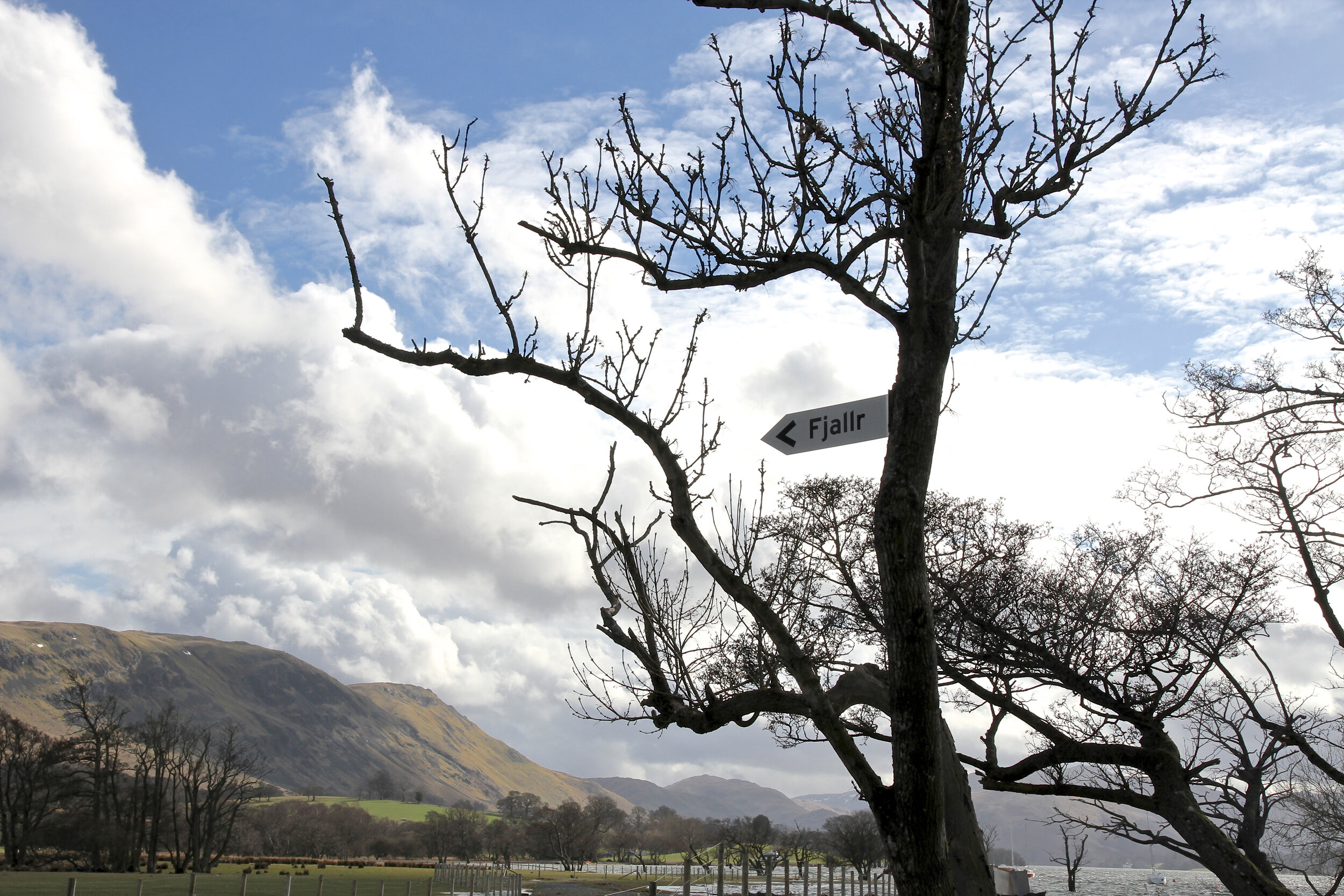
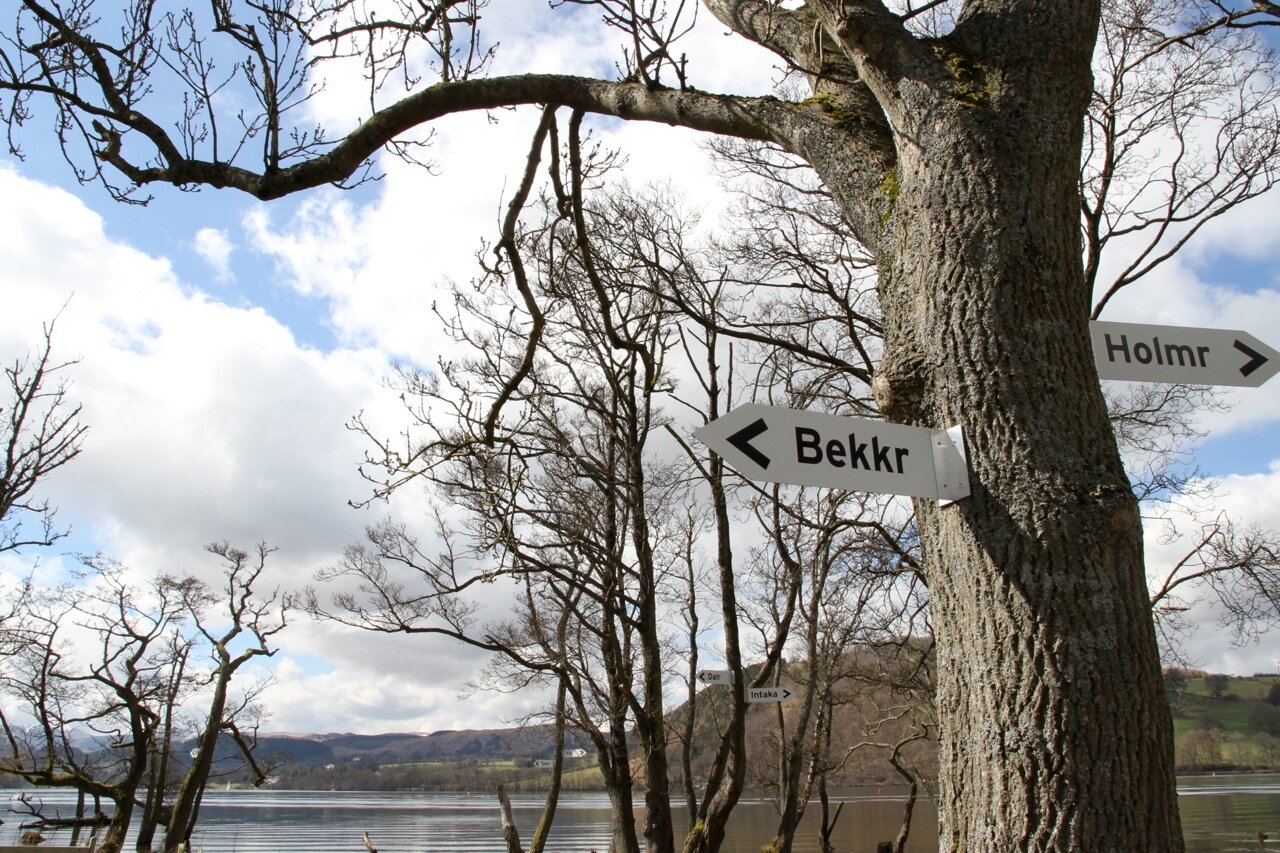
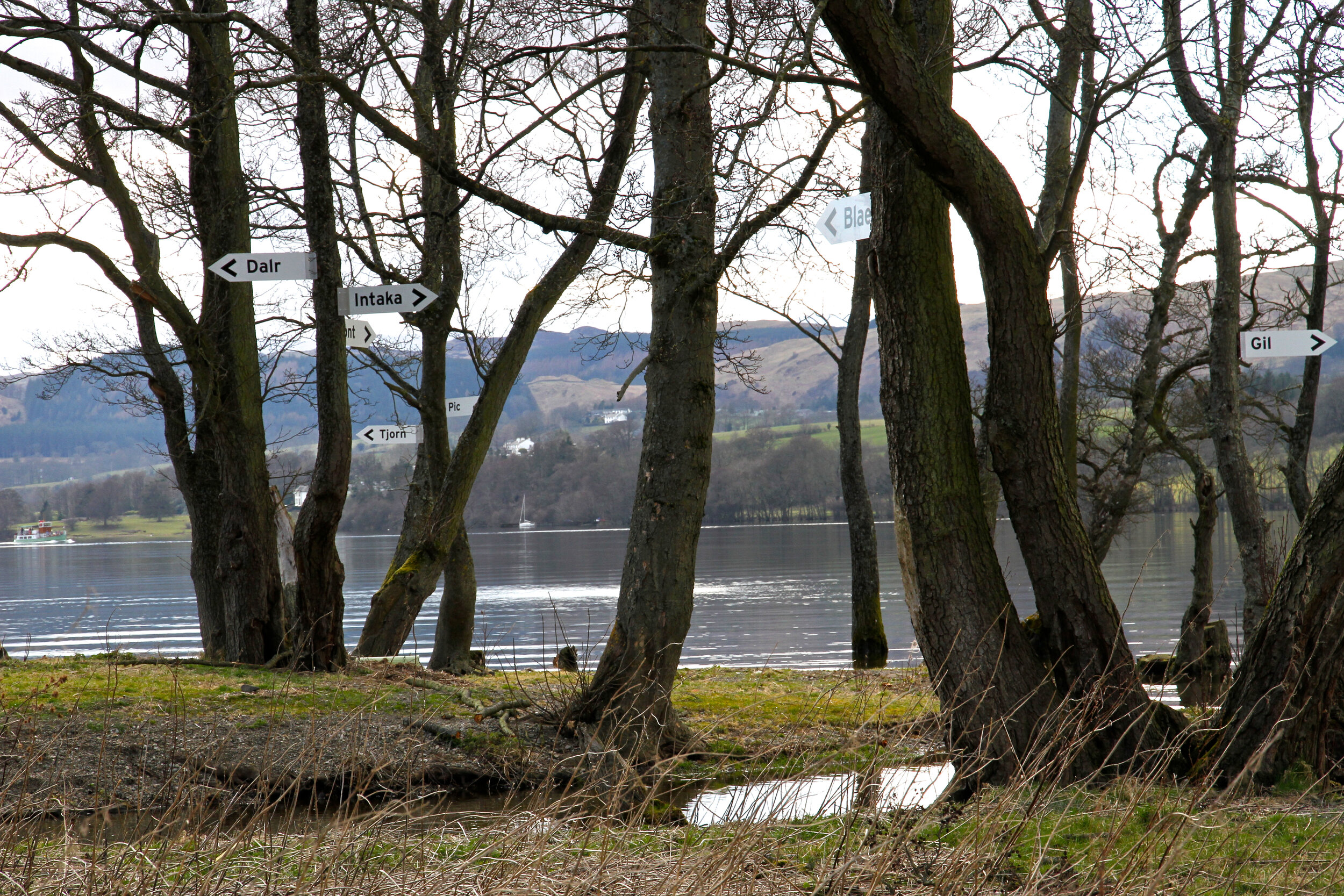
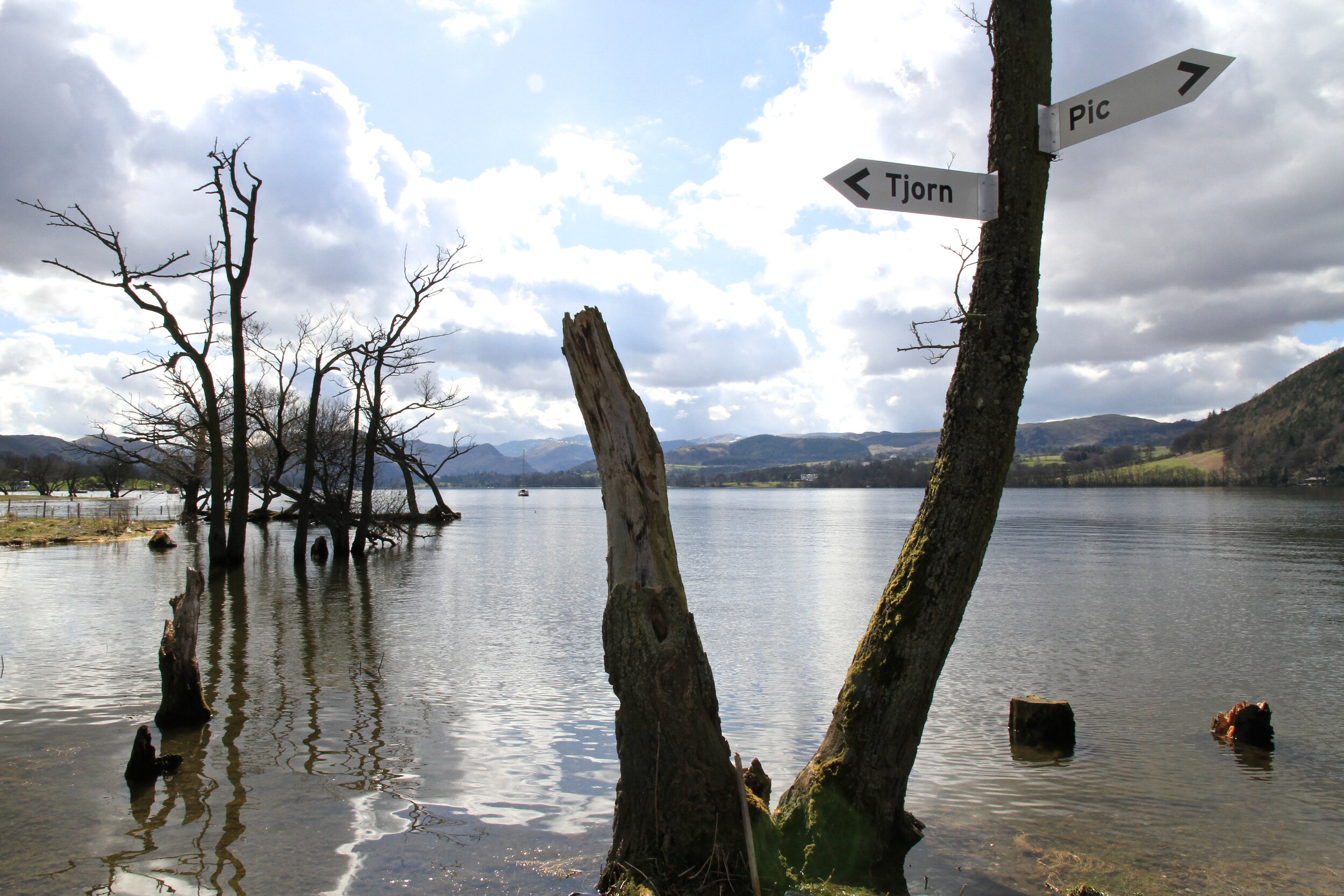

Installation 2 of 2
Last (Bank) 2013 / Harvested ash tree, neon sign
National Trust Acorn Bank, Cumbria
Housed within an old dovecote, the artwork emerges out of a body of work surrounding 'waste’ and out societal response to its existence. Whilst addressing notions of longevity, ecological collapse and economic stability.
The work contains an ash tree encased within a stairwell and balustrades crafted from elm, harvested from our last arboreal nightmare where over 20 million trees were sacrificed to Dutch Elm Disease.
'“Dutch Elm Disease arrived via an infected batch of logs that were imported in the late 1960’s to Britain. The Chalara Fraxinea (Ash Dieback) has arrived via the Netherlands and an imported batch of seedlings to Buckinghamshire. Both processes have at their roots a framework of international import and export with batch production and standardisation as a pre-requisite of manufacture.
The work also contains a neon sign that says: 'Last’. My reason for using it within this context is simple. I am asking what 'lasts’ and what’s 'lasting’ in terms of the way in which we treat the earth and each other. In the widest sense my art work questions the sustainability of the increasingly large supply-chains that bolster global profits whilst local businesses dwindle. I’m questioning the commercial viability of infrastructures reliant upon conflict minerals and cheap labour in the name of technological advancement. But mostly, I’m questioning mind-sets, mythology and the stories we tell ourselves about what’s actually happening to the ecosystem that supports us.”
Woolston
